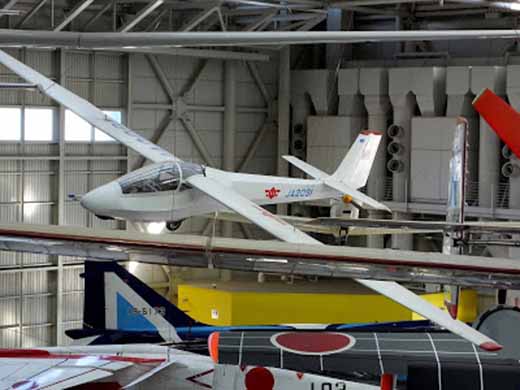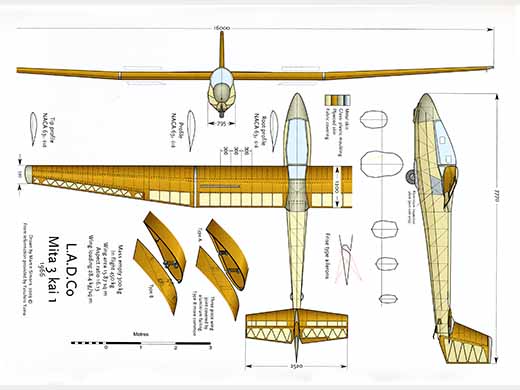| Infos techniques | Improved version of the original Mita 3 (1962), including a larger cockpit with a raised rear instructor's seat.
The Mita 3 is of mixed steel and wood construction, largely covered with plywood and fabric. The shoulder wing is in three pieces, with an unswept, straight leading edge and a centre panel of constant chord; the outer panels are straight tapered. All panels are built around plywood covered single box spars. The Mita designer, Asahi Miyahara, chose a NACA series 6 airfoil, popular at the time, which aimed to optimise laminar flow. The ailerons and the rear wing surfaces are fabric covered and the outer panels are demountable for transportation, the joints covered with aluminium fairings. The wing tips are glass-plastic mouldings. Schempp-Hirth airbrakes, located near mid-chord at the ends of the centre section, extend both above and below the wings.
The fuselage of the Mita 3 is steel framed with wooden stringers, polygonal in cross-section and fabric covered apart from a glass reinforced plastic (GRP) nose cone and a short GRP dorsal fairing behind the cockpit. The rear of the single piece, starboard side hinged canopy rises upwards above the rear fuselage line, allowing the instructor to be placed above the pupil pilot in the front seat, with an upper and two small side transparencies to assist his view. The fuselage tapers gently rearwards to the straight tapered tail surfaces; the tailplane is mounted on the top of the fuselage and is, like the wing, a ply box structure with fabric covering aft and carrying fabric covered elevators with a cut out for rudder movement. The fin is similarly plywood skinned, with a small GRP fillet; the rudder, which extends to the keel, is fabric covered, mass balanced and has a GRP tip. The Mita 3 lands on a fixed, rubber sprung monowheel undercarriage and a fixed tailskid. |




